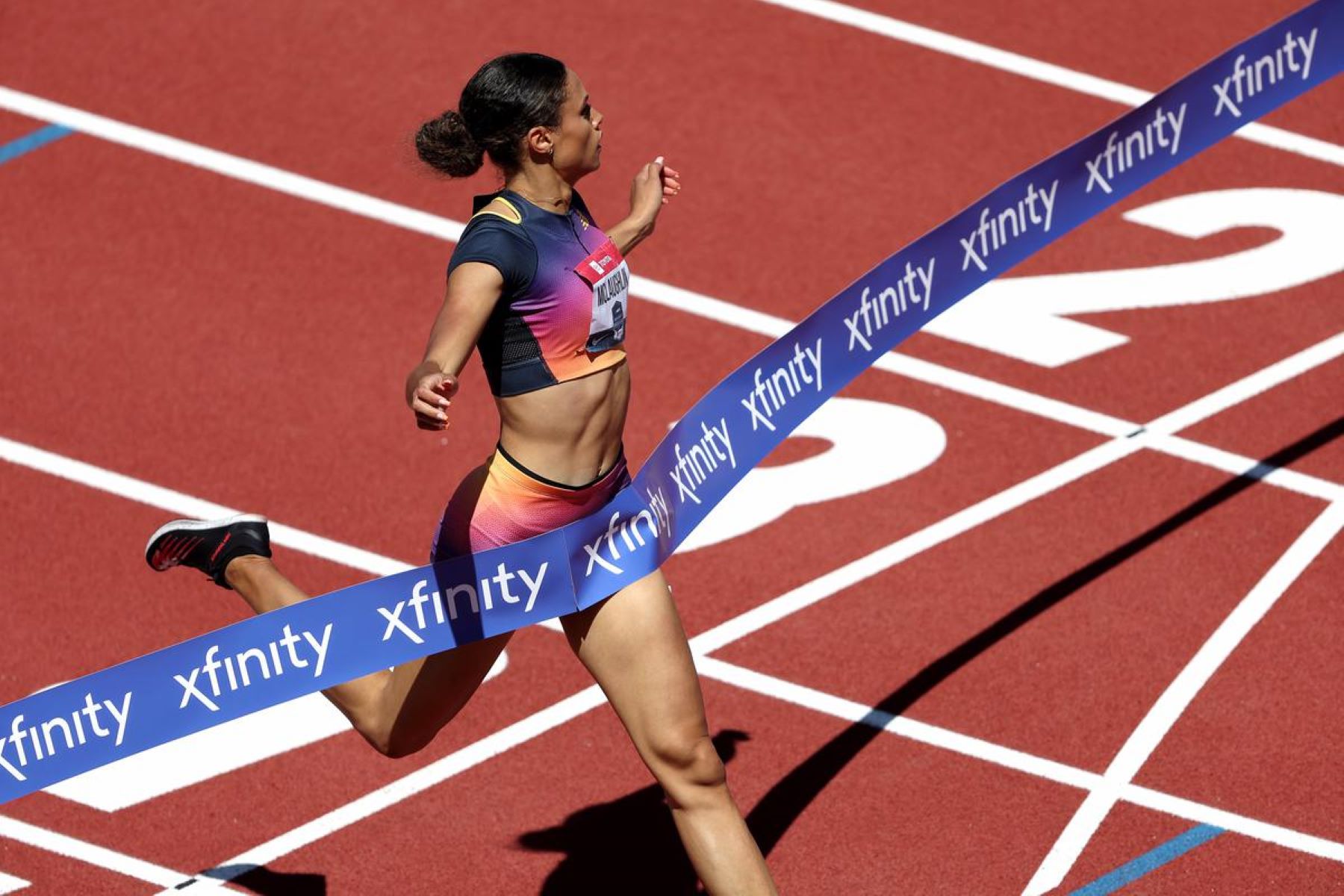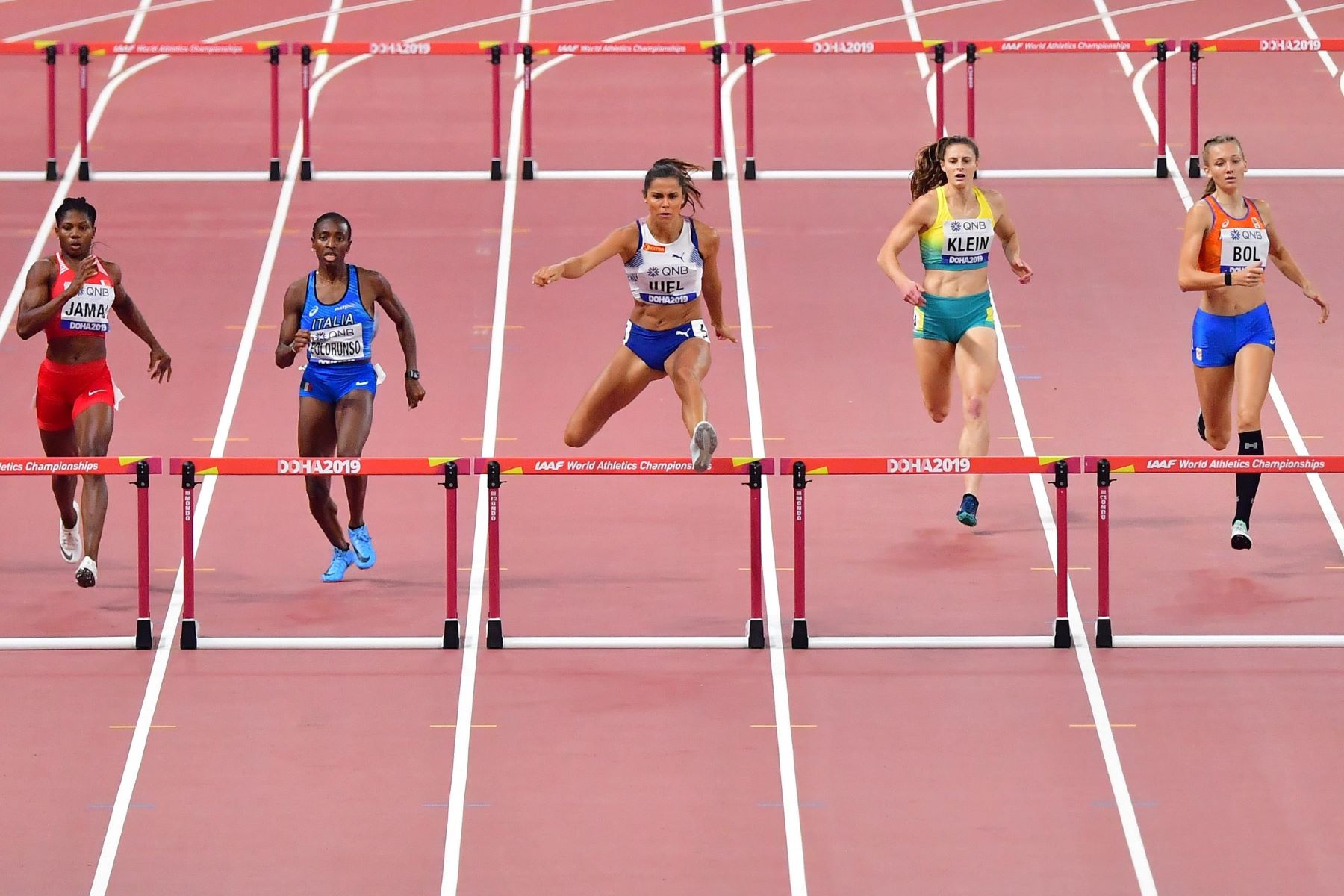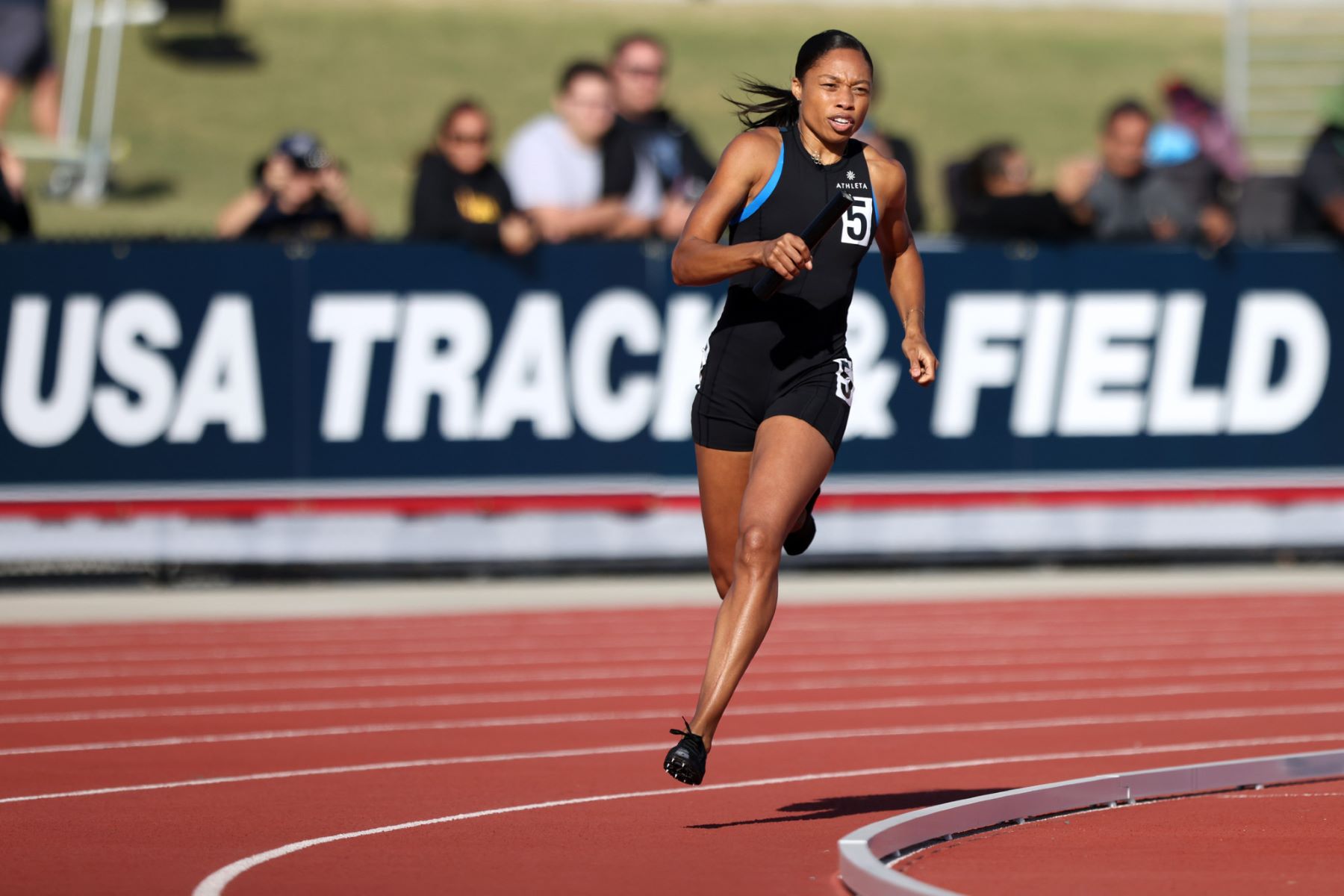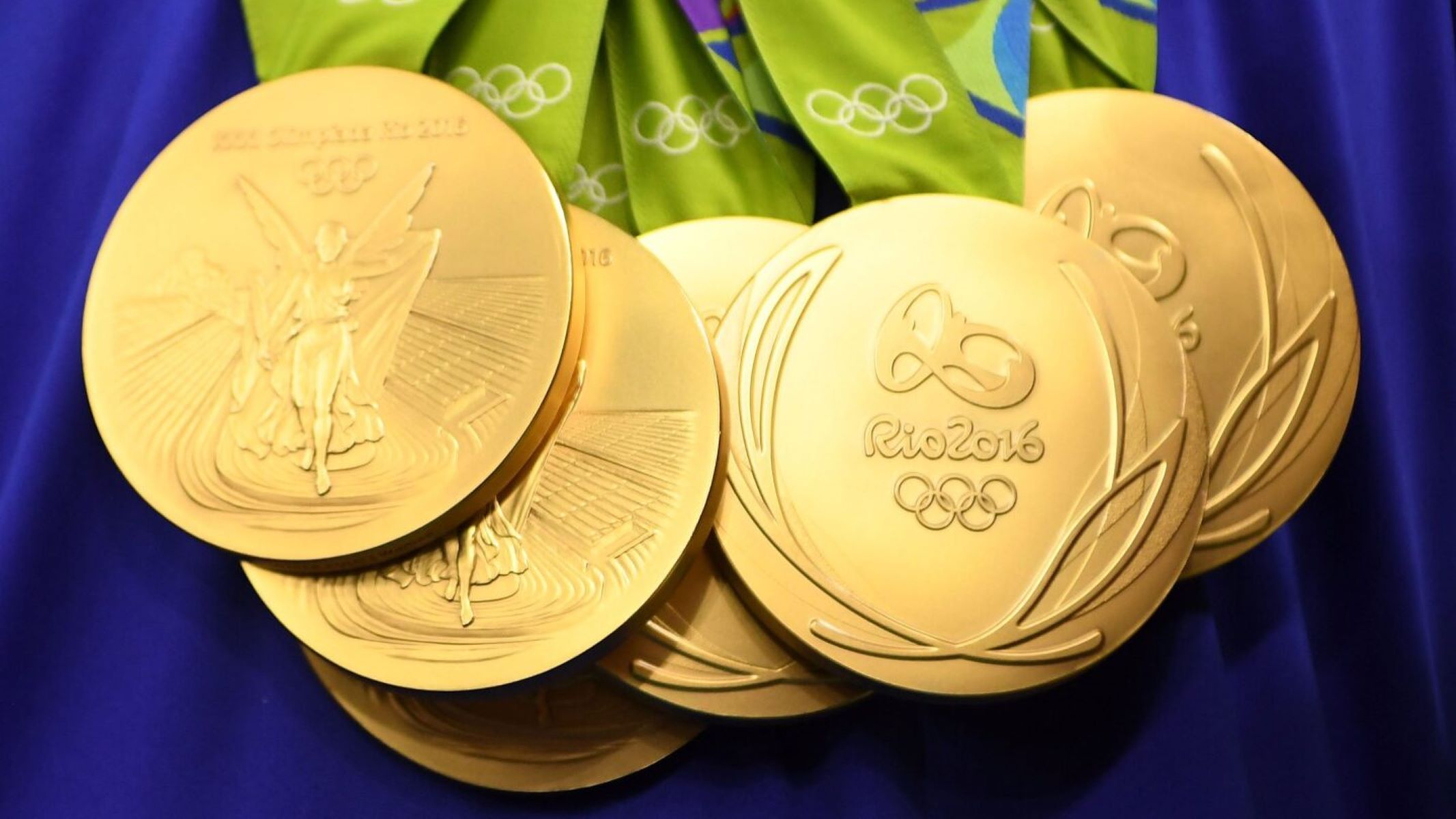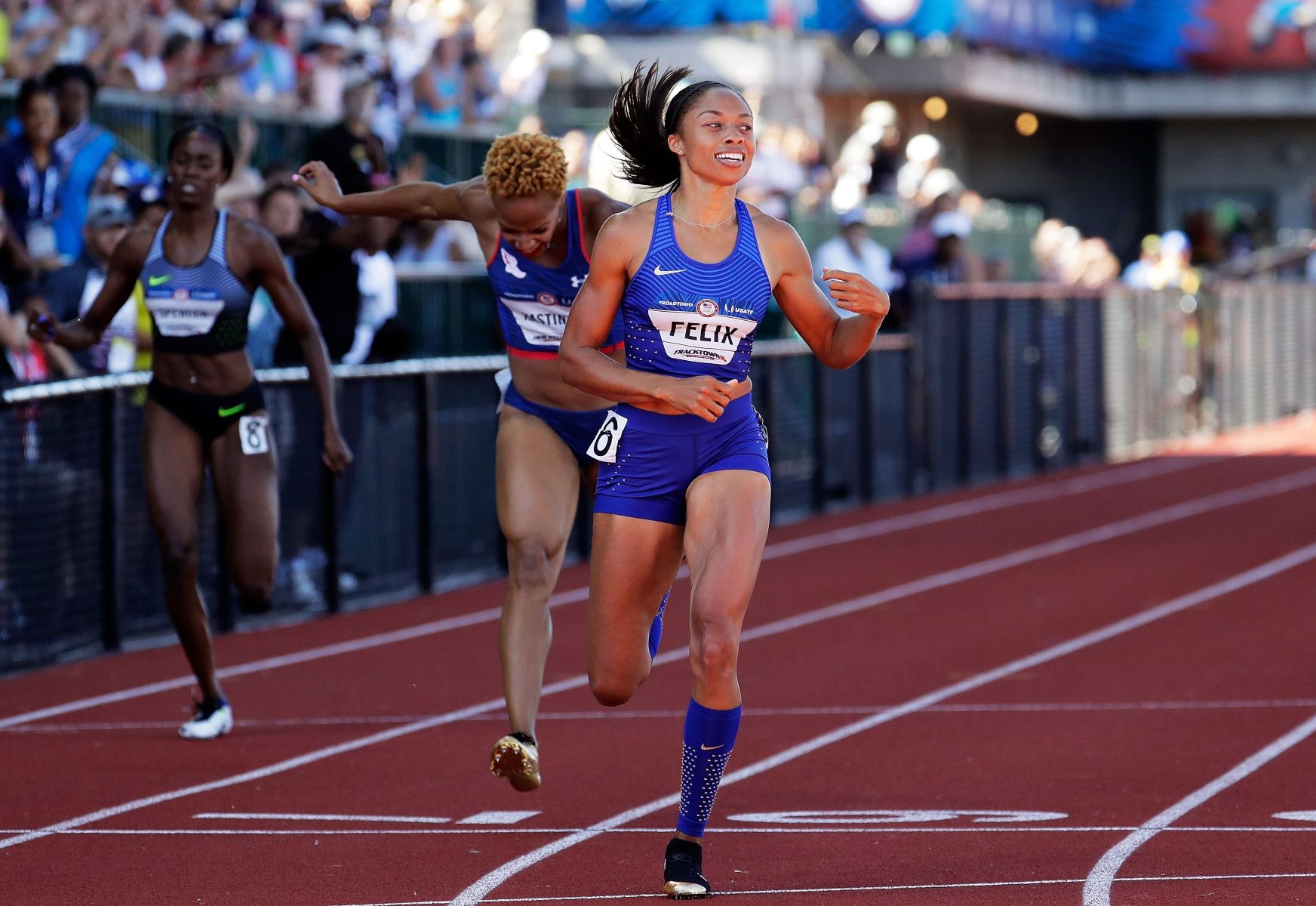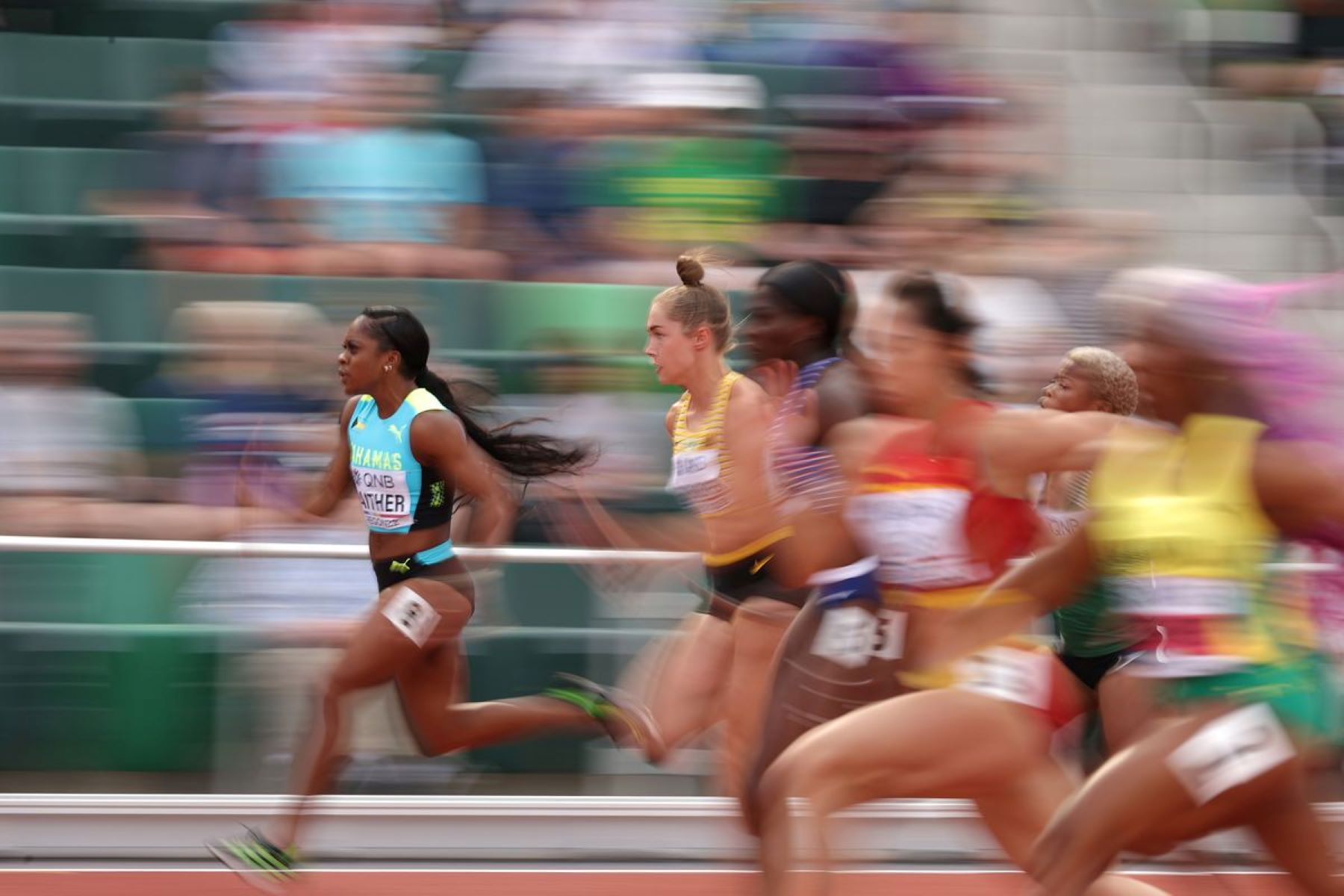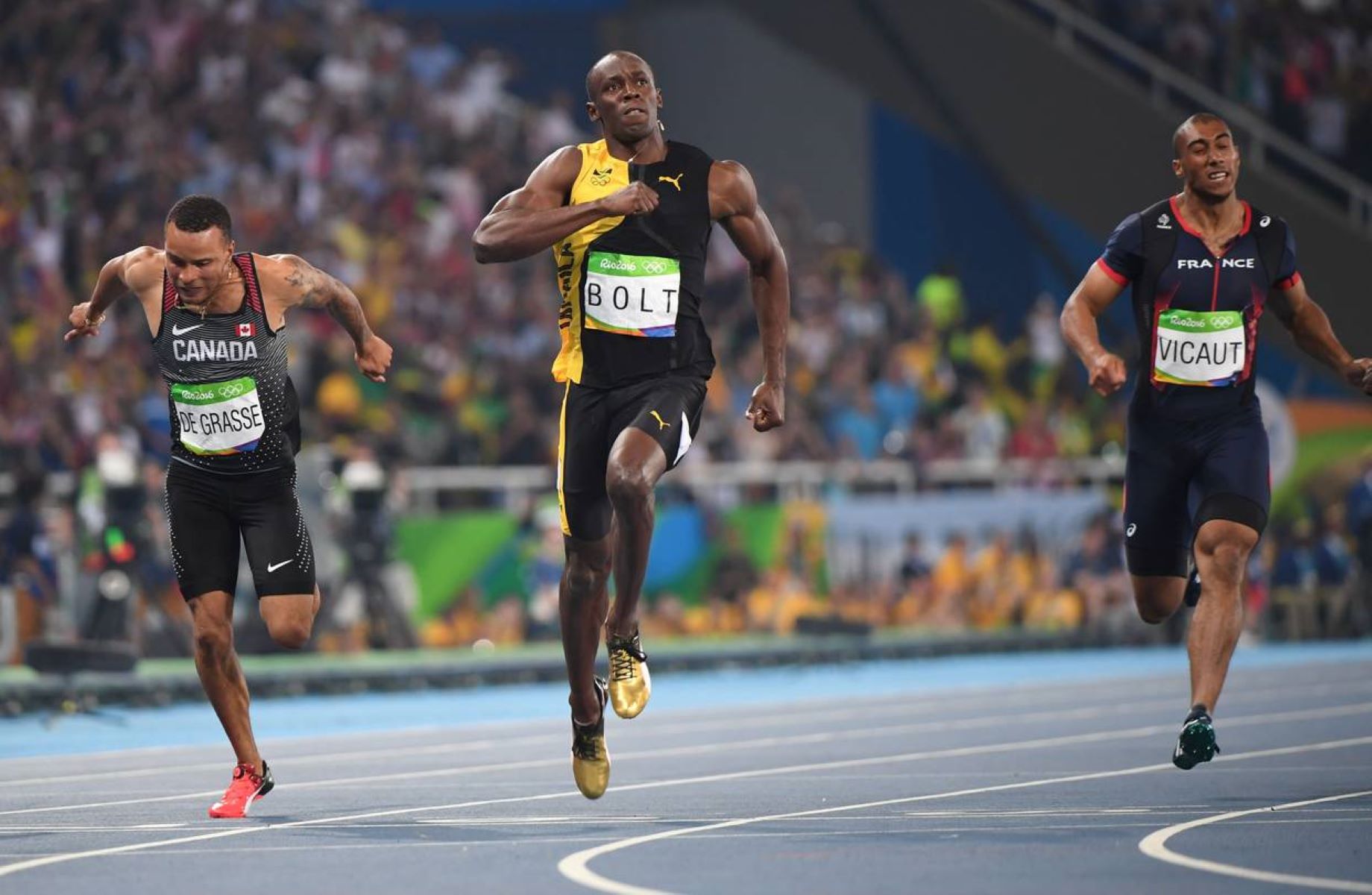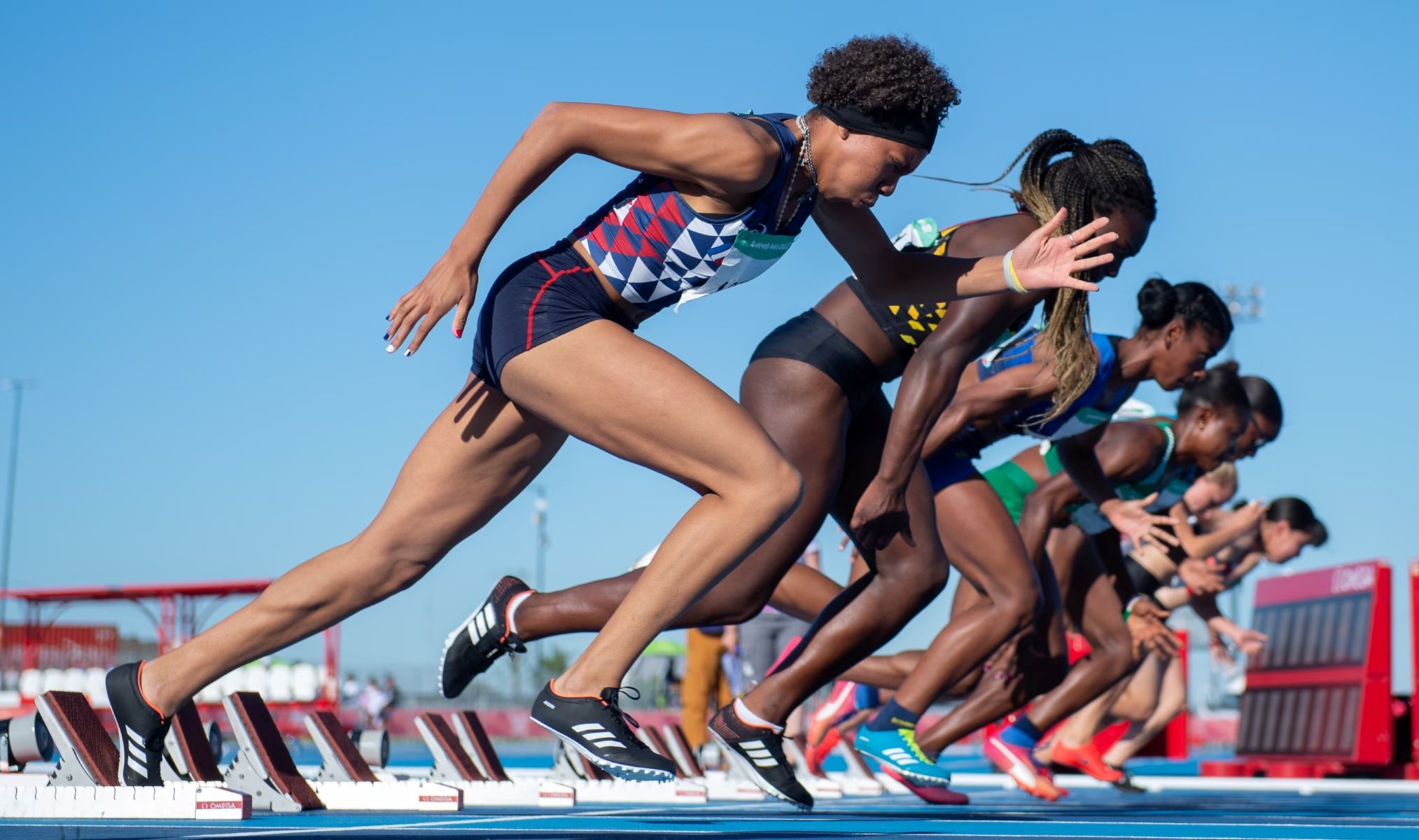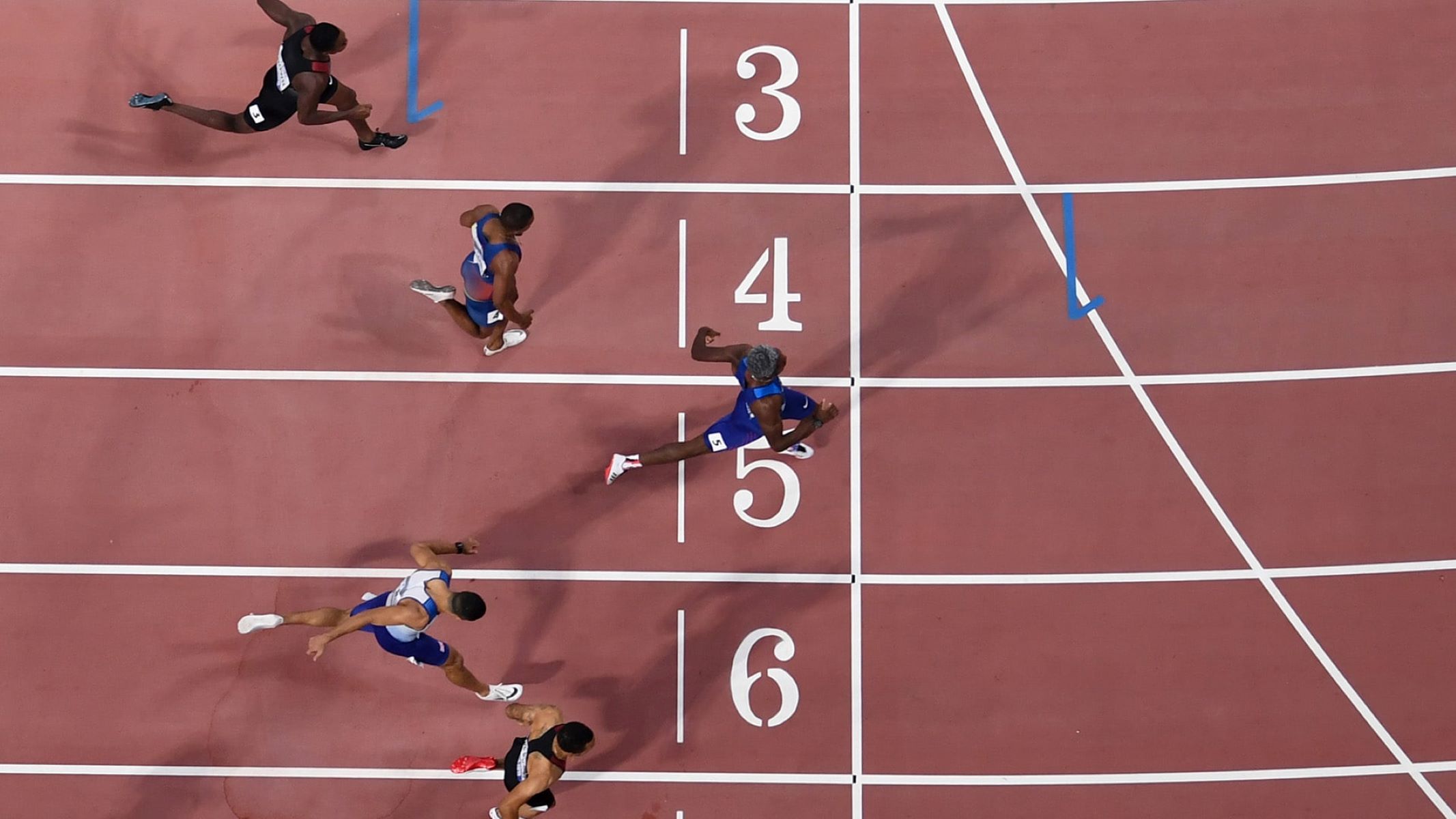Home>Misc>Featured>What Are The Track And Field Events For Women
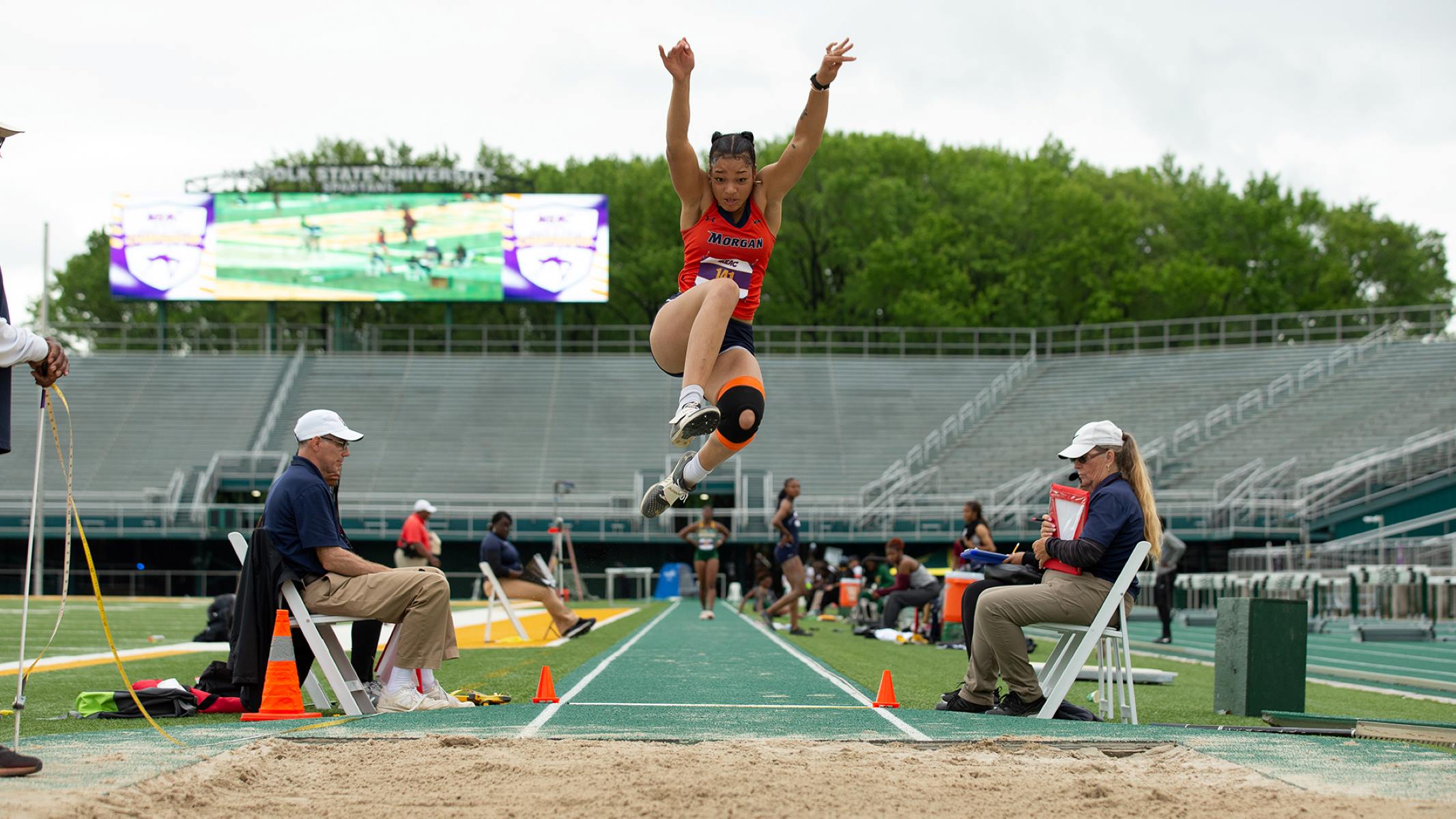

Featured
What Are The Track And Field Events For Women
Modified: January 22, 2024
Discover the incredible world of track and field for women with our featured articles. Learn about the history, events, and champions in this inspiring athletic discipline.
Introduction
Track and field is an exhilarating sport that tests an athlete’s speed, agility, and endurance. It comprises a variety of running, jumping, and throwing events, making it one of the most diverse and exciting disciplines in the world of athletics. While traditionally dominated by men, the participation of women in track and field has grown significantly in recent decades.
Women’s involvement in track and field has been instrumental in breaking down barriers and challenging societal norms. Through their incredible athletic abilities and determination, women athletes have paved the way for future generations, inspiring young girls to pursue their dreams and shatter glass ceilings.
In this article, we will explore the rich history of women’s involvement in track and field, from its humble beginnings to the current landscape. We will delve into the evolution of events specifically tailored for women, highlighting key moments and notable athletes who have left an indelible mark on the sport. Furthermore, we will shed light on the challenges faced by women in track and field and discuss the opportunities and advancements that have emerged in recent years.
Whether you are a fan of track and field or simply curious about the accomplishments and struggles of women athletes, this article will provide a comprehensive overview of women’s track and field. So let us embark on this journey, celebrating the incredible achievements and resilience of women in the world of athletics.
Definition of Track and Field
Track and field is a sport that encompasses a wide range of athletic events involving running, jumping, and throwing. It is a combination of individual and team competitions, with athletes competing against each other to achieve their personal bests and score points for their teams.
The name “track and field” refers to the two main components of the sport. The “track” refers to the oval-shaped running surface, typically made of synthetic materials such as rubber or a well-maintained grass field, where races take place. The “field” refers to the areas adjacent to the track, where events such as jumping and throwing are conducted.
The sport of track and field can be traced back to ancient Greece, where it was an integral part of the ancient Olympic Games. It gained popularity in modern times and is now an essential discipline in international athletic competitions, including the Olympics.
Track and field events are categorized into four main groups: running, jumping, throwing, and combined events. Running events include sprints, middle distance, long distance, hurdles, and relay races. Jumping events include high jump, long jump, triple jump, and pole vault. Throwing events consist of shot put, discus, javelin, and hammer throw. Combined events, also known as multi-events, such as the decathlon and heptathlon, involve a combination of running, jumping, and throwing events.
The objective of track and field events is to achieve the fastest time, highest or longest jump, or farthest throw. Athletes train rigorously to improve their speed, stamina, technique, and overall fitness to excel in their respective events.
Track and field is not only a highly competitive sport but also an opportunity for athletes to express their individual talent and dedication. It requires discipline, determination, and a relentless drive for improvement. The sport provides a platform for athletes to showcase their skills, challenge their limits, and inspire others with their achievements.
History of Women’s Involvement in Track and Field
The history of women’s involvement in track and field is a testament to the power of resilience and determination in the face of adversity. For centuries, women were excluded from participating in athletic competitions, with their physical abilities deemed inferior to men. However, women athletes defied societal norms and fought for their right to compete.
During the late 19th and early 20th centuries, women began to break barriers by participating in informal track and field events. These competitions were often met with resistance, as many believed that such activities were unladylike and could be detrimental to a woman’s health.
In 1896, women took part in track and field events at the Summer Olympics for the first time in history. However, their participation was limited to only a few events, including tennis and golf. It wasn’t until the 1928 Olympics in Amsterdam that women were allowed to compete in a broader range of track and field events.
Throughout the 20th century, women’s involvement in track and field continued to grow, although they faced considerable challenges and discrimination. They were subjected to unequal treatment, including shorter race distances and limited opportunities to compete at the international level.
However, despite these obstacles, women athletes persevered and showcased their immense talent. In 1960, Wilma Rudolph, an American sprinter, became a trailblazer for women of color in track and field by winning three gold medals at the Olympics.
In the early 1970s, the women’s rights movement gained momentum, leading to significant advancements in gender equality in sports. The passage of Title IX in the United States in 1972, which mandated equal opportunities for men and women in education, greatly expanded athletic opportunities for women, including in track and field.
Over the years, women have shattered records, pushed boundaries, and rewritten the history of track and field. Athletes like Flo-Jo, Jackie Joyner-Kersee, and Allyson Felix have become household names, inspiring generations of young girls and women to pursue their athletic dreams.
Today, women’s track and field events are popular and well-respected, with female athletes competing on the same international stage as their male counterparts. The inclusion of women’s events in major competitions, such as the World Championships and Olympics, has helped to elevate the profile of women’s track and field and provide equal opportunities for female athletes to showcase their skills.
While progress has been made, challenges and inequalities still persist in women’s track and field, such as disparities in funding, media coverage, and sponsorship opportunities. However, the continued resilience and determination of women athletes, coupled with the support of organizations advocating for gender equality, are paving the way for a brighter future for women in track and field.
Evolution of Track and Field Events for Women
The evolution of track and field events for women has been a remarkable journey, marked by progress, determination, and a relentless pursuit of equality. Over the years, the inclusion and expansion of events specifically tailored for women have transformed the sport and opened doors for greater participation and achievement.
During the early years of women’s involvement in track and field, there were limited opportunities for female athletes to showcase their abilities. In the late 19th and early 20th centuries, women were typically limited to participating in shorter distance races, such as the 100-meter sprint, while men competed in longer distance events.
However, as the women’s rights movement gained momentum and the push for gender equality grew, significant changes began to take place. In the 1920s, women’s track and field events started to expand, with the inclusion of the 800-meter and 4×100-meter relay races at the Olympics.
In the subsequent decades, more events were added to cater to the diverse abilities and strengths of women athletes. The 4×400-meter relay event was introduced at the 1964 Olympics, and the 3,000-meter steeplechase was incorporated into the program in 2008. These additions not only showcased the athleticism and endurance of women in track and field but also allowed for more thrilling and competitive races.
Another significant development in the evolution of women’s track and field events is the inclusion of field events specifically designed for female athletes. Historically, women were limited to certain throwing events, such as the shot put, while men participated in a broader range of events.
However, the gradual recognition of women’s abilities and the understanding that they could excel in various areas of track and field led to the addition of events like the discus throw, javelin throw, and hammer throw for women. These events have provided a platform for female athletes to showcase their strength, technique, and precision.
Furthermore, hurdles events and combined events, such as the heptathlon and pentathlon, have gained popularity among women athletes. These events test a wide range of athletic abilities and skills, including speed, stamina, jumping, and throwing, making them a true test of versatility and athleticism.
Today, women’s track and field boasts a comprehensive range of events that parallel those offered to men. Female athletes compete in a variety of races, including the 100-meter, 200-meter, 400-meter, and relays, as well as distance events such as the 800-meter, 1500-meter, and longer races. They also excel in field events such as long jump, high jump, and pole vault, alongside throwing events like shot put, discus, javelin, and hammer throw.
The equalization and expansion of track and field events for women has not only provided a level playing field but have also highlighted the incredible talent and abilities of female athletes. Women’s performances in track and field events have consistently broken records and pushed the boundaries of what was once thought possible.
The continuous evolution of track and field events for women demonstrates a commitment to inclusivity, equality, and recognizing the incredible athletic prowess of female athletes. By providing opportunities for women to compete in a wide array of events, the sport of track and field has set the stage for inspiring performances and the continued growth of women’s participation in athletics.
Key Events in Women’s Track and Field
Women’s track and field has witnessed numerous key events throughout history that have not only shaped the sport but also paved the way for future generations of female athletes. From groundbreaking competitions to record-breaking achievements, these events have played a pivotal role in the development and recognition of women in track and field.
One of the earliest significant events in women’s track and field was the inclusion of women’s athletics at the 1928 Olympics in Amsterdam. This marked a turning point, as women were finally allowed to compete in a wider range of track and field events, including the 800-meter race. The participation and success of female athletes in these events laid the foundation for further advancements in the sport.
In 1960, at the Rome Olympics, Wilma Rudolph became an iconic figure in women’s track and field. Overcoming childhood polio, Rudolph won three gold medals in the 100-meter, 200-meter, and 4×100-meter relay races, becoming the first woman to achieve such a feat in a single Olympics. Her triumphs inspired generations of young girls and highlighted the incredible abilities of women in the sport.
Another pivotal event was the establishment of the International Association of Athletics Federations (IAAF) World Championships in 1983. This global competition provided a platform for women to showcase their skills and compete on an international stage. Since its inception, women athletes have put on incredible displays of speed, strength, and endurance, fascinating audiences around the world.
In 1988, Florence Griffith Joyner, also known as Flo-Jo, made a lasting impact on women’s track and field. She set the world record in the 100-meter and 200-meter races, records that still stand today. Flo-Jo’s electrifying speed and iconic style solidified her place as one of the most legendary sprinters in history and inspired future generations of female athletes to strive for greatness.
The 1996 Olympic Games in Atlanta marked a significant milestone for women in track and field with the inclusion of the pole vault as an official event for the first time. This decision opened doors for female athletes who excelled in this discipline, providing them with an opportunity to compete on the highest stage and showcase their incredible skills and athleticism.
Recent years have seen remarkable achievements by women in track and field. At the 2016 Rio Olympics, Simone Biles, a world-renowned gymnast, showcased her exceptional athleticism and extraordinary skills. Biles solidified her place in history as one of the greatest gymnasts of all time, inspiring young girls around the world to aspire to greatness.
These key events in women’s track and field have revolutionized the sport, breaking barriers, and challenging the limits of what was once thought possible. They have not only celebrated the achievements of exceptional female athletes but also empowered women to pursue their dreams and make their mark in the world of athletics.
Famous Women Track and Field Athletes
Women’s track and field has produced a multitude of exceptional athletes who have left an indelible mark on the sport. These talented individuals have broken records, set new standards of excellence, and inspired generations of young athletes. Here are some of the most famous women track and field athletes who have made their mark:
Florence Griffith Joyner, also known as Flo-Jo, is an iconic figure in women’s track and field. Known for her flamboyant style and incredible speed, Flo-Jo set world records in the 100-meter and 200-meter races that still stand to this day. Her athleticism and charisma made her a beloved figure in the sport, and her lasting impact continues to inspire young athletes worldwide.
Jackie Joyner-Kersee is widely regarded as one of the greatest female athletes of all time. Her versatility and dominance in multiple events, including the long jump, heptathlon, and hurdles, earned her numerous Olympic and World Championship titles. Joyner-Kersee’s dedication, strength, and remarkable performances have solidified her place in track and field history.
Allyson Felix is a legendary sprinter who has conquered numerous races and won multiple Olympic gold medals. Known for her speed, endurance, and precision, Felix has become one of the most decorated athletes in track and field history. Her resilience and determination both on and off the track have made her a role model for aspiring athletes worldwide.
Usain Bolt may be an iconic figure in men’s track and field, but it’s worth mentioning his female counterpart, Shelly-Ann Fraser-Pryce. Known as the “Pocket Rocket,” Fraser-Pryce has dominated the sprinting events, winning multiple Olympic and World Championship gold medals. Her explosive speed and effervescent personality have made her a fan favorite and a tremendous inspiration to young women in track and field.
Serena Williams, although primarily known as a tennis player, deserves recognition for her incredible athleticism and impact on women’s sports. Beyond her tennis prowess, Williams has demonstrated her ability to compete in other areas. She has tested her skills in sprinting events and continues to showcase her versatility as an athlete, breaking down barriers and inspiring other women to pursue their athletic dreams.
These are just a few examples of the many remarkable women track and field athletes who have achieved greatness. Their dedication, talent, and relentless pursuit of excellence have not only brought them individual success but have also propelled the sport of track and field to new heights. Their accomplishments continue to inspire young athletes to dream big and push beyond limits, leaving a lasting legacy in the world of sports.
Challenges Faced by Women in Track and Field
Women in track and field have overcome significant challenges throughout history to establish their rightful place in the sport. Gender inequality, lack of opportunities, stereotypes, and societal expectations have all posed obstacles for female athletes. While progress has been made, there are still challenges that women face in track and field today.
One of the longstanding challenges for women in track and field is the persistence of gender inequality. Historically, women’s events received less recognition, funding, and media coverage compared to men’s events. This disparity has hindered the growth and visibility of women’s track and field, making it difficult for female athletes to gain the same recognition and opportunities as their male counterparts.
Stereotypes and societal expectations have also had an impact on women in the sport. There has been a persistent belief that certain events are more suitable for women, leading to a lack of diversity in the disciplines they participate in. This limited representation can restrict the choices and opportunities available to female athletes, preventing them from fully exploring their potential in different events.
Another challenge faced by women in track and field is the issue of pay equity. Despite their achievements and contributions to the sport, female athletes often receive lower prize money and sponsorships compared to their male counterparts. This pay disparity not only impacts their financial stability but also reinforces gender inequality within the sport.
The physical toll of training and competition is another challenge that women in track and field must navigate. Balancing high-performance training with other responsibilities, such as education, work, and family, can be extremely demanding. The physical demands of the sport, combined with societal expectations, can create additional challenges for female athletes.
Furthermore, female athletes often face scrutiny and criticism regarding their appearances and bodies. Body shaming and unrealistic beauty standards can negatively impact their self-esteem and perception of their athletic abilities. Overcoming these external pressures and stereotypes is crucial for female athletes to focus on their performance and realize their full potential in track and field.
While these challenges persist, there have been positive developments in recent years. The increased visibility and support for women’s sports, equal prize money initiatives, and advocacy for gender equality are steps in the right direction. Organizations such as the International Association of Athletics Federations (IAAF) and Women’s Sports Foundation are working to address these challenges and create an inclusive and equitable environment for women in track and field.
Although there is still work to be done, the resilience, determination, and immense talent of women athletes continue to break barriers and inspire future generations. By overcoming these challenges and continuing to push for progress, women in track and field are making their mark in the sport and creating a more inclusive and equitable future for all athletes.
Current Landscape of Women’s Track and Field
The current landscape of women’s track and field is one of increasing recognition, progress, and inspiration. Female athletes are now competing at the highest level, breaking records, and captivating audiences around the world. The sport has made significant strides in promoting gender equality and providing opportunities for women to excel.
Women’s track and field is now on par with men’s in terms of the variety and depth of events offered. Female athletes compete in a wide range of races, including sprints, middle and long-distance events, hurdles, and relays. They showcase their skills and athleticism in field events such as the long jump, high jump, pole vault, shot put, discus, javelin, and hammer throw.
The increased visibility and coverage of women’s track and field events have played a crucial role in elevating the sport. Major competitions and international events, such as the Olympics, World Championships, and Diamond League, provide platforms for female athletes to shine on a global stage. Media coverage has improved, bringing more attention to the accomplishments and stories of women in the sport.
One of the most significant advancements in the current landscape is the growing support and recognition for the achievements of women athletes. Organizations and initiatives focused on women’s sports, such as the Women’s Sports Foundation and various women’s track and field associations, help foster opportunities, advocate for equal treatment, and provide resources for the development of women in the sport.
The current landscape of women’s track and field also reflects the increasing professionalism and commercialization of the sport. Female athletes are securing lucrative sponsorship deals and endorsements, allowing them to focus on training and competition. This financial support not only provides stability for athletes but also raises the profile of women’s track and field as a whole.
Equality in prize money and resources is gaining momentum. Many major competitions now offer equal prize money for both men and women, recognizing the achievements and efforts of female athletes. This has been a significant step towards eliminating gender disparity and promoting fairness in the sport.
Women in track and field continue to inspire and serve as positive role models for aspiring athletes. Their incredible performances, dedication, and resilience break down barriers and challenge stereotypes, encouraging young girls to pursue their passion for sports and participate in track and field.
Despite the progress made, there are still areas that require attention. Addressing disparities in media coverage, financial support, and representation in leadership positions are ongoing challenges that need to be overcome. Continued efforts to promote women’s track and field at all levels, from grassroots to the elite, are crucial to nurturing and developing the talent of future generations.
Overall, the current landscape of women’s track and field demonstrates significant advancements in recognition, support, and opportunities for female athletes. The sport continues to evolve, thanks to the incredible performances and determination of women athletes who push the boundaries of what is possible. It is an exciting time for women’s track and field, and the future holds immense promise for further growth and success.
Opportunities and Advancements for Women in Track and Field
Over the years, there have been significant opportunities and advancements for women in track and field, marking a shift towards greater equality and recognition in the sport. Efforts to level the playing field and create inclusive environments have opened doors for female athletes, providing them with more opportunities to showcase their talents and achieve their goals.
One of the key opportunities for women in track and field is the increased visibility and media coverage of the sport. Major international events, such as the Olympics and World Championships, have highlighted the incredible performances of female athletes, capturing the attention of global audiences. This increased exposure not only elevates the status of women in the sport but also inspires young girls to participate and pursue their athletic dreams.
Advancements in equal pay have also provided a significant opportunity for women in track and field. Many organizations and sporting bodies have made strides towards closing the pay gap, ensuring that female athletes receive fair compensation for their achievements. This recognition of their value and contribution to the sport not only provides financial stability but also reinforces the importance of gender equality.
Another significant advancement for women in track and field is the increasing availability of resources and support systems. Women’s sports organizations, governing bodies, and sponsors are investing in providing equal opportunities for training, coaching, and access to facilities. This support system plays a crucial role in nurturing the talent and development of female athletes, allowing them to reach their full potential.
Opportunities for scholarships and collegiate programs have played a pivotal role in advancing women in track and field. Universities and colleges now offer extensive athletic scholarships, enabling talented female athletes to pursue higher education while competing at a high level. This opportunity not only provides education but also serves as a platform for further athletic achievements and personal growth.
Advancements in technology and sports science have also opened doors for women in track and field. Innovations in equipment, training techniques, and data analysis contribute to improved performance and greater understanding of women’s physiological needs. This knowledge helps in tailoring training programs, reducing the risk of injuries, and optimizing athletes’ potential.
Furthermore, women leaders and advocates within the sport have played a crucial role in promoting opportunities and advancements for female athletes in track and field. Their influence and dedication have contributed to breaking down barriers, challenging biases, and creating inclusive environments for women in the sport. Their mentorship and guidance inspire and empower future generations of women athletes.
With the continued efforts to promote gender equality and enhance opportunities for women in track and field, the future holds immense promise. Initiatives that encourage participation, advocate for equal treatment, and provide necessary resources and support will undoubtedly shape a more inclusive and equitable landscape for women in the sport. As these opportunities and advancements continue to grow, women in track and field will be able to achieve new heights of success and inspire generations to come.
Conclusion
The journey of women in track and field has been one of resilience, determination, and progress. From overcoming societal barriers to breaking records and challenging stereotypes, women athletes have left an indelible mark on the sport. The evolution of women’s involvement in track and field, along with the recognition of their abilities, has paved the way for a more inclusive and equitable future.
Throughout history, women in track and field have faced numerous challenges, including gender inequality, limited opportunities, stereotypes, and societal expectations. However, their unwavering dedication to their sport and relentless pursuit of success have shattered barriers and paved the way for future generations of female athletes.
Today, the landscape of women’s track and field reflects significant progress. Women athletes compete on the same international stage as their male counterparts, showcasing their incredible skills and athleticism. Greater visibility, media coverage, financial support, and equal pay initiatives have brought more recognition and opportunities for women in the sport.
The opportunities and advancements for women in track and field are expanding, with increased resources, support systems, and access to training and development programs. Women leaders and advocates within the sport continue to break down barriers and champion gender equality, inspiring future generations to follow in their footsteps.
As we look to the future, it is clear that the journey of women in track and field is far from over. There are still challenges to overcome, such as disparities in funding, media coverage, and representation. However, the resilience, determination, and immense talent of women athletes will continue to pave the way for a more inclusive and equitable landscape in the sport.
Women in track and field serve as role models for aspiring athletes, proving that with hard work, passion, and courage, they can achieve greatness and make their mark in the world of athletics. The stories of these remarkable women inspire perseverance, empower young girls to pursue their dreams, and demonstrate the power of sport in breaking down barriers and promoting gender equality.
As we celebrate the rich history, accomplishments, and ongoing progress of women in track and field, let us continue to support, uplift, and advocate for gender equality in the sport. By working together, we can create a future where all athletes, regardless of gender, have equal opportunities to thrive and succeed in track and field.
